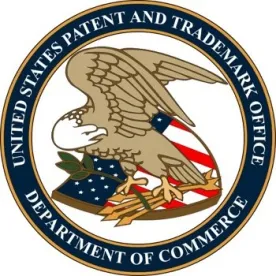The US Court of Appeals for the Federal Circuit affirmed a Patent Trial and Appeal Board (PTAB) finding that the challenged claims were anticipated and obvious. Monsanto Tech. LLC v. E.I. DuPont de Nemours & Co., Case No. 17-1032 (Fed. Cir., Jan. 5, 2018) (Wallach, J). Regarding the anticipation finding, the Court found that the PTAB properly considered declarations by inventors of a prior art patent.
Monsanto owns a patent related to a step process for mating two parent soybean lines to produce soybean seeds with a modified fatty acid profile. DuPont sought inter partes re-examination of several claims of the patent. During re-examination, DuPont submitted two declarations from a named inventor of the primary prior art reference. The PTAB found the claims anticipated by and obvious over the prior art reference, in part by relying on the declarations. Monsanto appealed.
Monsanto argued that the PTAB erred by (1) misconstruing the claim element “about 3 percent or less” linolenic acid content to include a content of 4 percent, (2) rejecting the claims for anticipation and (3) using a legally erroneous obviousness theory.
The Federal Circuit found that the PTAB properly construed the “about 3 percent or less” claim element. Finding that the claim language was not instructive, the Court turned to the specification and found that a disclosed example contained a range of linolenic acid content from 2.3 percent to 4.1 percent. Based on this disclosure, the Court concluded that a person of ordinary skill in the art would reasonably consider “about 3 percent or less” to encompass a range that includes 4 percent.
As to anticipation, Monsanto argued that the prior art reference did not anticipate Monsanto’s claims because it failed to explicitly identify plant progeny with characteristics required by the claims’ limitations and because the PTAB relied on the inventor’s declarations as prior art. The Federal Circuit disagreed, explaining that the prior art reference inherently anticipated the challenged claims notwithstanding that it reported only a select subset of progeny lines, because its disclosure necessarily included progeny that fell within the scope of the claims. As to the PTAB’s reliance on the declarations, the Court found that extrinsic evidence may be used to support what is “necessarily present” in a prior art reference. The Court found that the declarations demonstrated what was inherent in the teachings of the prior art reference, rather than expanding the meaning of the prior art reference or serving as prior art themselves. Thus, the Court held the PTAB properly relied on the inventor’s declarations.
Finally, the Federal Circuit affirmed the PTAB’s finding of obviousness, agreeing with the PTAB that a person of ordinary skill in the art would have been motivated to modify the prior art reference to produce progeny having fatty acid profiles as claimed in the patent.



 />i
/>i

